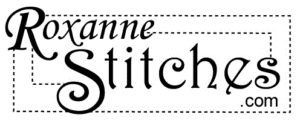Thank You ALL so much for the Amazing response to my last video, Part 13 on the Adjustable Binding Foot!! I appreciate all your patience and gentle “reminders” for me to do a review on that foot specifically. I hope if you’ve given it a try, you’re as impressed as I was. If not, get it out and give it a go! Now moving on to the next specialty foot that came with the Singer Quantum Stylist 9960.
Here’s a list of the bonus feet that came along with this machine:
7. Shank/Ankle


The Welt Cording Foot is a specialty foot that I’ve used before on a project and I’ve blogged about in a review here, “The Right Foot for the Job”. I thought it was important to add a video now to give you a more realistic view of how to use this foot. The first review of this foot was done on the Singer Quantum L-500. However, this video and demo is a continuation of my video series featuring the Singer Quantum Stylist 9960.
In order to use this foot and attach it to the 9960, it must be joined to the special shank/ankle that came with the bonus foot package shown in the first picture above. The second picture shows the channel on the bottom of the foot which makes this foot unique. This channel rides on top of the cording wrapped in bias fabric. It enables the needle to stitch close to the edge of the cording. The result is perfect cording for your projects!
There are two parts needed to create welting or piping. The first component is a cord to cover with fabric. Stores sell a variety of sizes of cording from very thin to heavier depending on what your end use may be. You can cover any type of cording, but the standard cording looks like the natural colored one on the bottom of the next picture. The black cording pictured on top, is what I used for my demo.

The second component needed to create piping is bias cut fabric to cover the cording. In the next picture is the same white poly/cotton woven blend I use for all my demos cut into bias strips.

For this video demo, I covered black cording with white bias fabric to create the piping. This was to make it easier for you to see the components I was using for the demo. If you’re interested in creating your own continuous bias for piping, binding or cording, I’ve written a Picture Tutorial: Creating Continuous Bias. This tutorial will show you the step by step process for making any width bias needed for a project simply and easily, even with small scraps of fabric.
The process of creating piping or welting is easy. Install the special shank/ankle onto the 9960. Snap on the welt cording foot onto the shank/ankle. Wrap the bias cut fabric firmly around the cording and then place the cording under the foot inside the groove. The raw edges of the fabric should be on the right side. Now stitch guiding the fabric wrapped cording underneath the foot. That’s it! Simple, easy professional looking piping.

Here’s a picture of the finished piping. Notice how even and smooth it looks. That’s thanks to this fantastic Welt/Cording Foot! I hope you’ll try this foot out and see how easy it makes creating piping for one of your projects!

